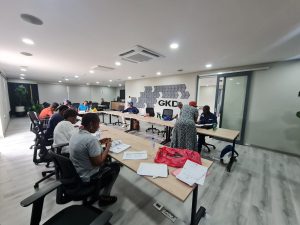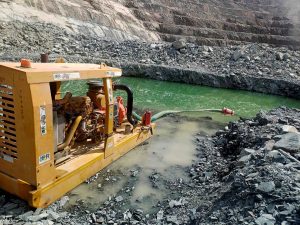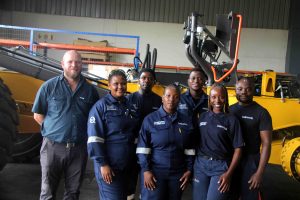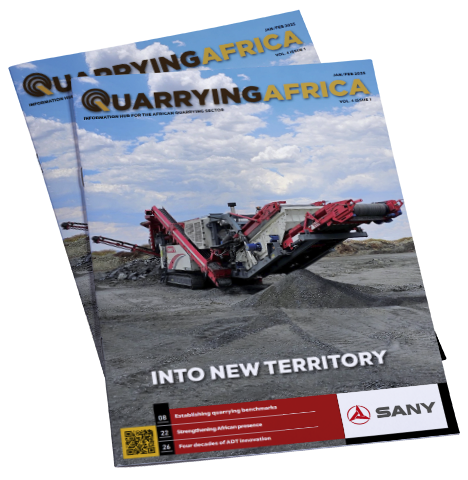As a leader in technology-driven productivity, Sandvik Mining and Rock Solutions supports the continuous upskilling of operators and maintenance teams to keep up with the ever-evolving capabilities of its equipment.
“Our strategic aim is always to ensure that the impact of our mining solutions is optimised through the expertise and capability of the staff who operate and maintain them,” says Sipho Kunene, Operator and Technical Training Manager at Sandvik Mining and Rock Solutions. “This means focusing our training on the specific conditions and requirements of each customer and each site.”
Kunene highlights that advances in technology are allowing Sandvik Mining and Rock Solutions to tailor its skills development interventions so that it adds maximum value to customers’ mining operations. This is achieved by digitally monitoring its equipment during operation, gathering crucial data and subjecting this to analytical examination.
“By having this accurate data input, we can identify where there might be gaps in an operator’s performance,” he explains. “The training can then be designed to address particular areas to be improved – so that there is a direct impact on the results achieved. This monitoring capability is already built into our i-Series intelligent equipment ranges.”
He points out that the gap analysis could also indicate where on-mine processes could be finetuned for better results. The focus is on ensuring that the customer achieves their expected return on investment in their mining assets.
“We take a holistic view of the situation, and make recommendations to the customer on the most suitable training intervention,” he says. Training begins in the classroom, where learners are orientated on elements such as the equipment’s operating features and safety aspects. This provides a foundation for the more practical aspects of the training which follow.
“An important advantage of our training capabilities is our advanced simulation equipment,” he says. “This allows learners to experience a realistic working environment while not compromising the safety of workers or risking damage to the equipment itself.”
Training on the simulator also protects the learner from the production pressures of the workplace, making it easier to grasp and practice the technical skills without undue distraction or danger. Sandvik Mining and Rock Solutions even have a portable simulator that can be readily transported to mines for use on-site. This eases the logistical requirements of moving operators to a central training venue, and reduces the disruption to their normal working hours.
“Once they are comfortable on the simulator, they can be taken to the next practical stage of learning – where they encounter the real machines,” says Kunene. “As this practical training progresses, the process can move towards the optimisation of the equipment’s application and the operator’s performance.”
Assessments are a vital part of the training, and are conducted at various stages – culminating in the awarding of a certificate that recognises their competence. This assists the industry and the operator, allowing mobility of skills while assuring employers of an operator’s ability to optimise the capabilities of an item of equipment.
“This gap analysis approach is also applied to the technical staff who maintain Sandvik machines,” he continues. “We believe the training intervention must be planned and delivered in close consultation with the customer, to ensure their precise needs are addressed.”
He notes that South Africa faces a general skills challenge in relation to fast changing technology trends – in mining as in other sectors. The traditional diesel mechanic skill set, for instance, is often no longer sufficient in an environment where diesel driven machines are increasingly incorporating electronic and digital components.
“The move to battery powered machines is also well advanced within Sandvik,” he says. “Our in-house skills base reflects this shift, and we want to support our customers in building their own expertise.”
This has led Sandvik Mining and Rock Solutions to develop a ‘second trade’ among its artisans. Included in the approach is the upskilling of traditional trades such as millwright or electrician, to ensure that their skill set is suited to the changing needs. The company also collaborates with the Tshwane University of Technology to put the relevant staff and trainers through a programme in mechatronics.
“Disciplines like these add to our base of expertise, which is vital as we move into the age of intelligent machines, battery driven vehicles and higher levels of automation,” concludes Kunene.







